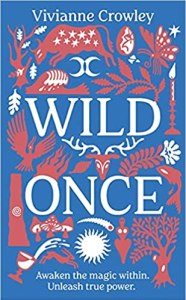 It’s an academic truism that historians and archaeologists do not play well together. Historians like texts. Archaeologists like artifacts. Each profession favors its own methodology.
It’s an academic truism that historians and archaeologists do not play well together. Historians like texts. Archaeologists like artifacts. Each profession favors its own methodology.
But there are execeptions. An archaeologist friend wrote to me last year recommending Neil Price’s Children of Ash and Elm: A History of the Vikings. Price, who teaches at Uppsala University in Sweden, blends the strands masterfully, along with some climatology, religious studies, and geography.
Why did the “Viking Age,” roughly the 8th through 11th centuries happen as it did? I have seen some people blame population growth – Scandinavia had excess people, and they had to go somewhere.
Wrong. The volcanic “Finbul Winter” — I wrote about it here — cut the Scandinavian population in half in the 530s. It was a terrible time for the Norse, the End of Civilization as They Knew It. An Iron Age version of Mad Max. Whatever the earlier cultures had been — and they included Bronze Age boat trips to Western Europe — this was literally the post-apocalypic version.
The ones who survived probably did so by forming warbands for mutual defense. There is no way that by the mid-700s there were too many people for the land.
So what grew up next were many small chieftaindoms. Pirate kings, you might say. And there was also a shortage of marriagable women, something like we see in China today after decades of the One-Child Policy and selective abortion in favor of boys.
The Big Men could have more than one wife; the poor boys were out of luck. So what is a poor boy to do? Join the jarl’s raiding crew and if lucky come back with lots of loot to impress the girl next door — and meantime, bring back a sex slave too. (So what if she only speaks Old Irish; she is not there for her conversational skills.)
Coupled with [conflict between petty kingdoms] were social pressures—the effects of polygyny creating an underclass of young men disenfranchised by the laws of inheritance and with minimal marriage prospects. A summer or two of maritime violence offered the potential for life-altering change in many directions. Lastly, there was the traditional Scandinavian worldview itself, and its weaponised expression in an assault on the Christian cultures that really were bent on its destruction (274–75).
Although it was left out of the History Channel Vikings series, the slave trade was big for them in both Western and Eastern Europe. So was fighting as mercenaries.
But there is more to Price’s big book that that. With chapters like “The Performance of Power,” “Meeting the Others,” and “Dealing with the Dead,” readers get more than raiders, kings, long ships and mead halls.
It was through the medium of sorcery, not cult, the most of the conversations with the powers were conducted. . . . At its simplest, sorcery was a means, or a method, a set of mechanisms by which people tried to influence or compel the Others to do their biding. In the Viking Age, this was a field of behaviour that lay within the real of ordinary communities rather than any kind of priestly or royal officialdom (221).
There are fascinating calculations, such as it would have taken three to four person-years to prepare the woolen yard and weave the main sail for one Vikig ship. “We might realistically speak of a year’s constant work for about thirty people to fully equip a ship and crew (387).” (Slaves probably did a lot of it, Price suggests.) Or the wool of two million sheep annually for the sailcloth of the warships, cargo vessels, and fishing boats of Norway and Denmark.

He gives the East equal space with Western Europe (and North America) and the Mediterranean. I started this book in late February and, trying to take my mind off the news, flipped it open only to read, “According to the Primary Chronicle [Kyiv] was founded by one Oleg (Helgi), a Scandinavian relative of Rurik, who expanded the Rus’ territories along the [Dniepr] river and needed a more southerly base (426).”
That trident (tryzub) insignia you see on Ukrainian aircraft, etc. comes from the Rurik dynasty. In other words, it’s Viking.
The Viking Age, Price writes, “was a time of horrifying violence and equally awful structures of institutionalised, patriarchal oppression. . . . also a period of social innovation, a vivid and multi-cultural time, with considerable tolerance of radical ideas and foreign fairths.”
Their most respected values were ot only those forged in war but also — stated outright in poetry — a depth of wisdom, generosity, and flection. Above all, a subtlety, a certain play of mind, combined with a resilient refusal to give up.
There are worse ways to be remembered (504).


















 There you are, war and magic at the speed of social media. But there might be more to say about putting your magical intentions out on the internet. I will have more to say about that in a short time.
There you are, war and magic at the speed of social media. But there might be more to say about putting your magical intentions out on the internet. I will have more to say about that in a short time.